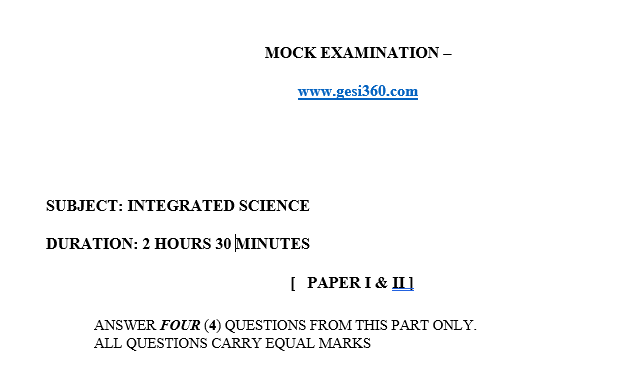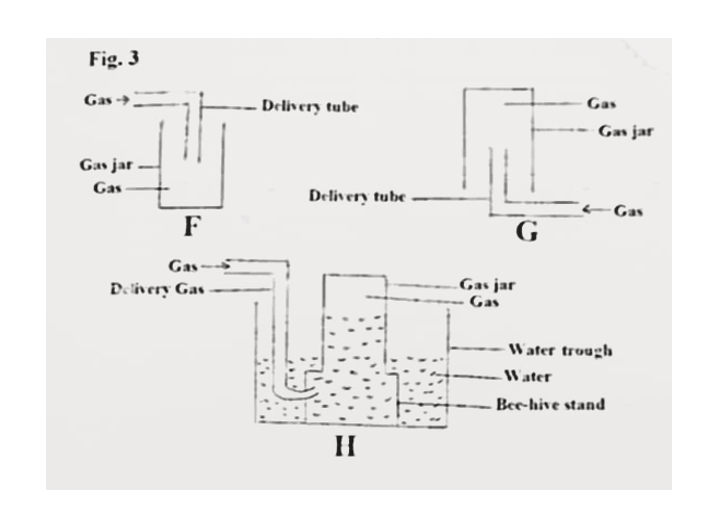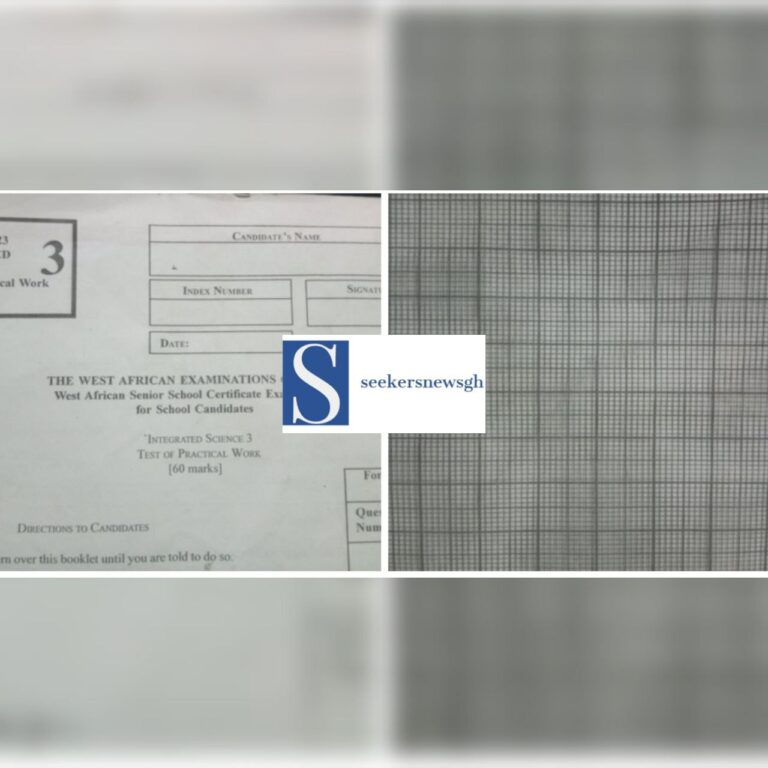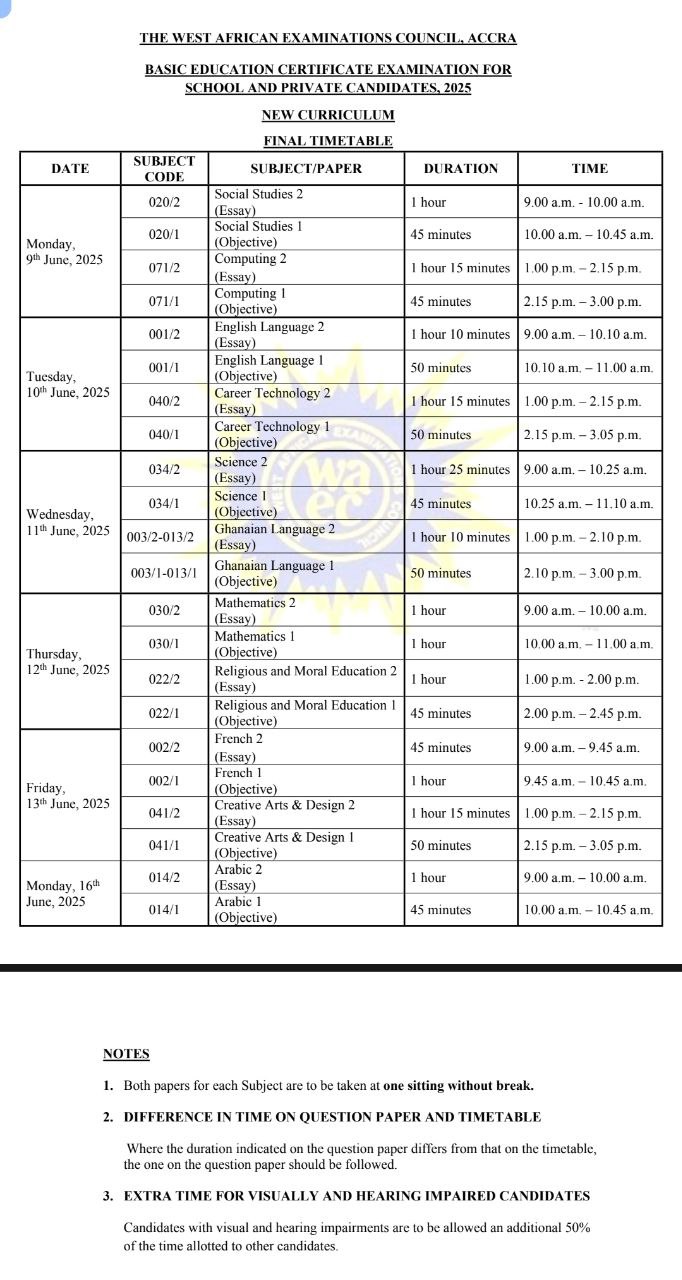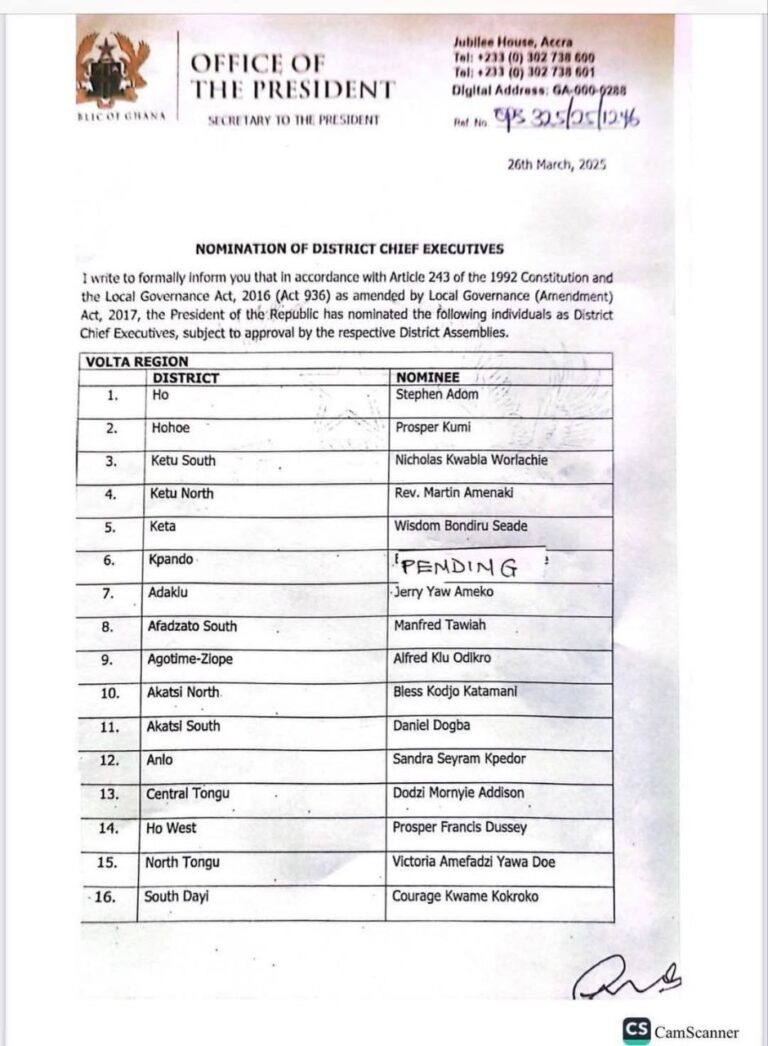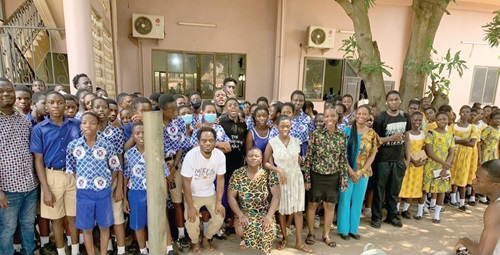Key Levels of Assessment Level 1, 2, 3, 4, Explanations and Examples Level 1; Recall Level...
GESI/SEL Responsive Assessment – Exams
DD promotion questions and answers pdf free download Deputy Director (DD) Promotion Aptitude Test Questions and Answers ...
WASSCE Integrated Science Mock Paper 2 Theory 001 Download (a)(i) What is a mixture? [1marks] (ii) State...
SHS WASSCE MOCK INTEGRATED SCIENCE PAPER 3 PRACTICALS 001 Download Candidate Name ………………………….. Index number ………………………………...
How to Use GESI responsive assessment as a Teacher The Teacher 1) reviews student attendance every 2-3...
Pedagogy 2 Collaborative and Experiential Approach PLC Lesson The collaborative approach to learning has to do...
Answering the WASSCE Integrated Science Practical Questions The Integrated Science practical is known as Paper Three. The...

